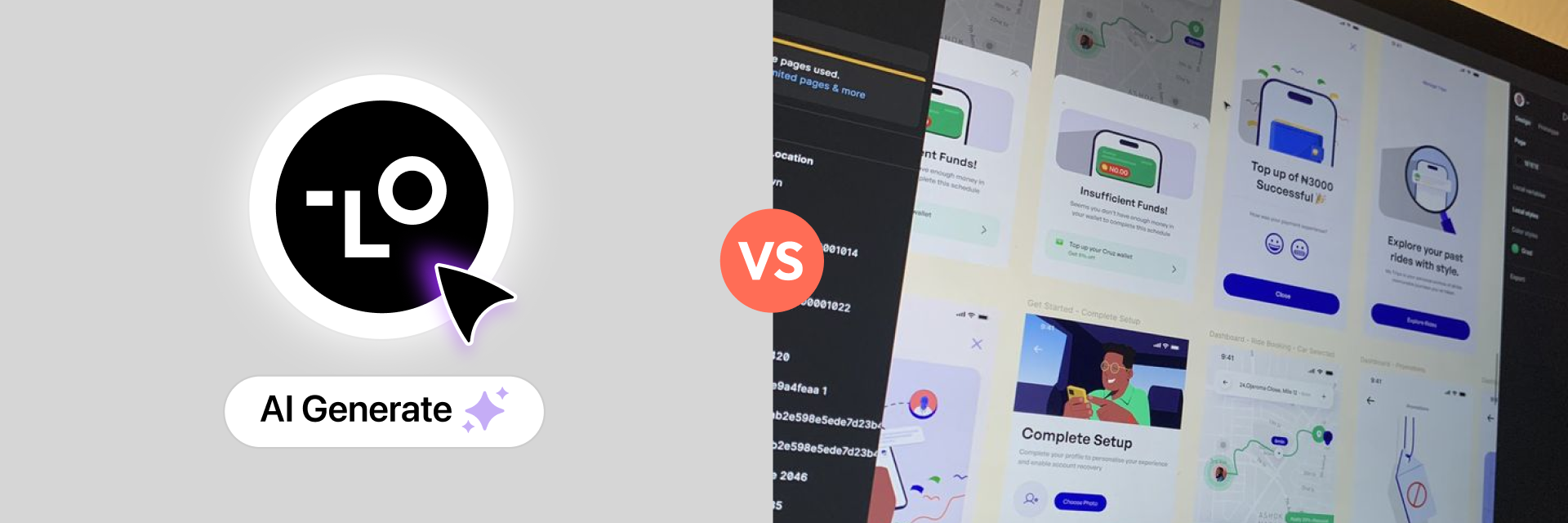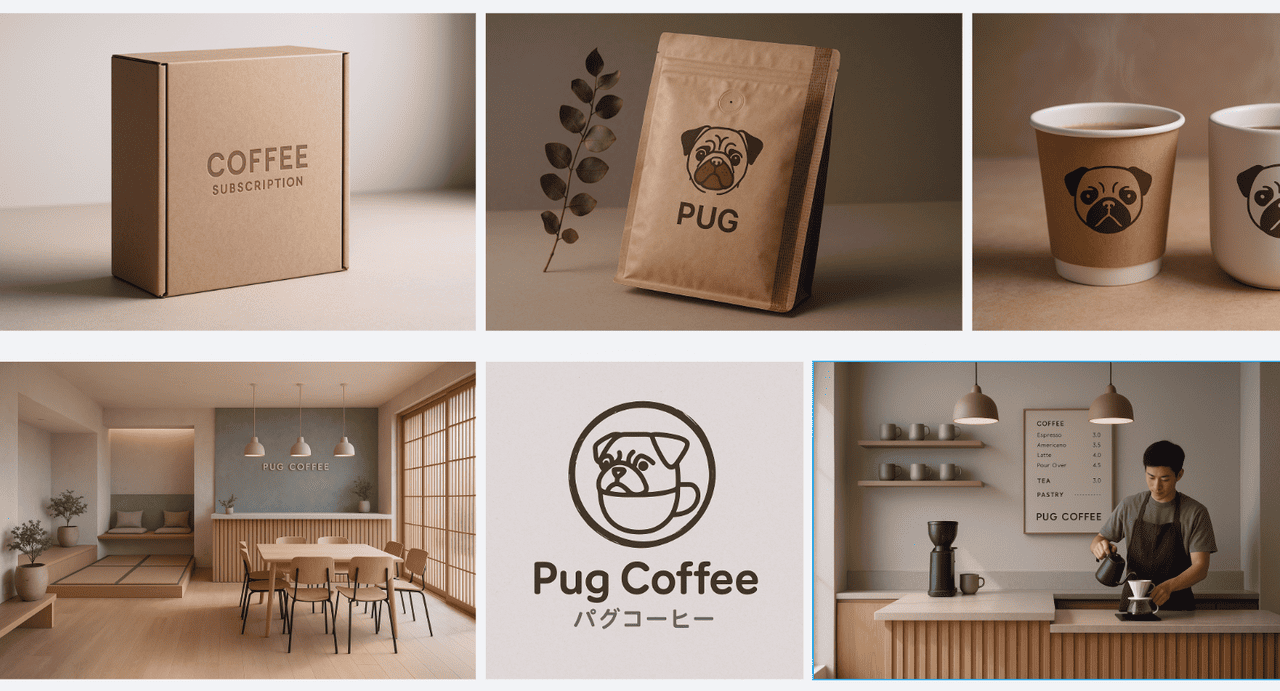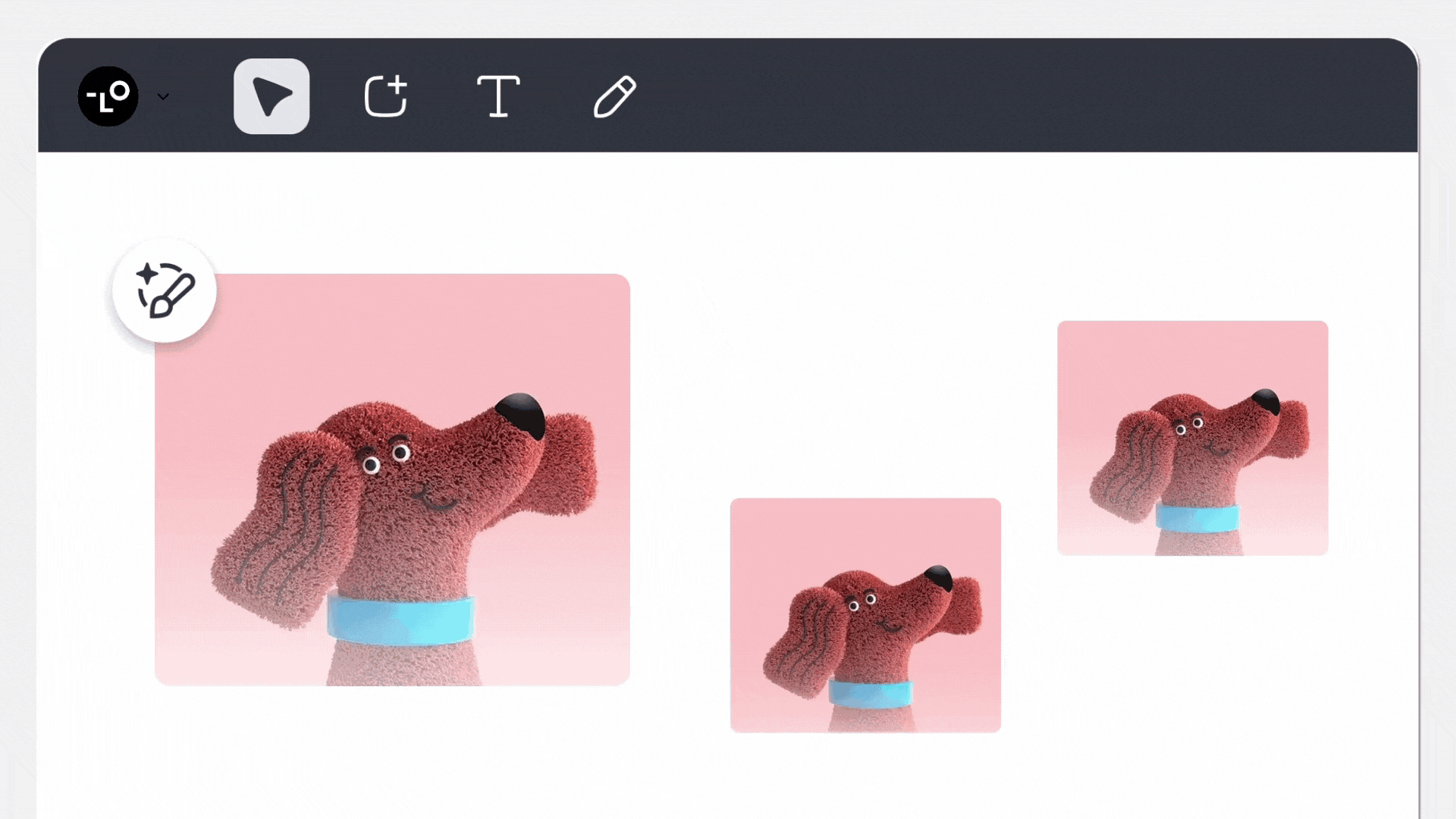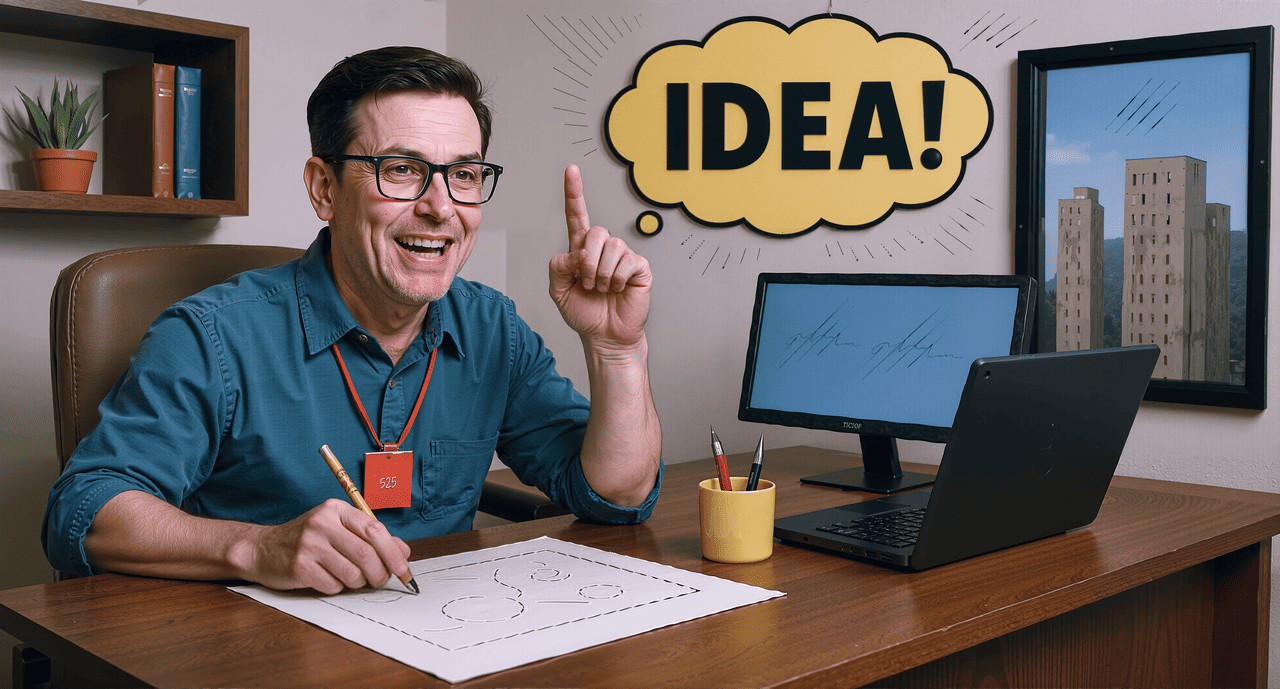AI Design vs Traditional Design: Which is Better for Creativity?


Picture this: You have a critical design project with a tight deadline, limited budget, and sky-high expectations. Do you turn to time-tested traditional design methods, or embrace the cutting-edge power of AI design agents? This isn't just a technology debate—it's about the future of creativity itself.
The design landscape is experiencing a seismic shift. AI tools like Lovart.ai are revolutionizing how we approach creative challenges, blending machine precision with human imagination. But traditional design still holds irreplaceable value in our increasingly digital world. So which approach reigns supreme?
The answer might surprise you—and it's more nuanced than you think.
Understanding the AI Design Revolution
What Makes AI Design Agents Different?
AI Design Agents represent a quantum leap beyond simple automation tools. They're intelligent creative partners that learn, adapt, and evolve with your design needs. Unlike traditional software that follows predetermined commands, these agents analyze patterns, understand context, and generate solutions that feel surprisingly human.
Lovart.ai exemplifies this evolution perfectly. Rather than just executing tasks, it collaborates with you throughout the entire creative process—from initial brainstorming to final execution. It's like having a seasoned designer available 24/7, one who never runs out of fresh ideas or creative energy.
The Power of AI-Human Collaboration
The magic happens when AI capabilities merge with human creativity. Consider Lovart.ai's eco-friendly coffee packaging featuring playful pug designs—environmentally conscious, visually appealing, and commercially successful. This wasn't created by AI alone or human alone, but through intelligent collaboration that leveraged the best of both worlds.

Key advantages of AI Design Agents:
- Rapid iteration and experimentation without fatigue
- Data-driven insights that inform creative decisions
- Scalable creativity that maintains consistency across projects
- 24/7 availability for global teams and tight deadlines
- Cost-effective scaling for growing businesses
The Enduring Power of Traditional Design
The Irreplaceable Human Touch
Traditional design carries something AI cannot replicate: the depth of human experience, cultural understanding, and emotional intelligence. When you see a hand-painted mural, feel the texture of handcrafted pottery, or experience a custom wedding invitation, you're connecting with something profoundly human.
This isn't nostalgia—it's neuroscience. Our brains are wired to respond to authentic human expression in ways that purely algorithmic creation cannot trigger. Traditional designers bring intuition, cultural sensitivity, and emotional depth that transforms functional objects into meaningful experiences.
Why Use AI Design Agents?
Here’s why AI Design Agents are useful:
- They make designing more creative and exciting.
- They focus on making designs that users will love.
- They spark new ideas and help with planning and testing.
- They often lead to better and more imaginative results.
With tools like Lovart.ai, you can try ideas you might not think of alone. It’s like having a partner who always has fresh ideas.

The Great Comparison: AI vs Traditional Design
Traditional design is special because of the human touch. It’s not just about making things look nice. It’s about putting feelings and effort into every detail. Handmade pottery feels unique compared to factory-made bowls. A hand-painted mural tells a story that printed posters can’t.
Creativity in traditional design isn’t only about art. It’s also about solving problems that machines can’t handle. Designers use their ideas to overcome challenges. They pick the right materials or match designs to cultural styles. This ability keeps traditional design strong and growing.
Here’s something interesting: creativity in traditional design often works with data to improve results. For example:
- Designers use feedback, like Apple, to make better products.
- YouTube uses viewer data to help creators make popular content.
- Duolingo combines creativity and research for effective learning designs.
These examples show creativity isn’t just about ideas. It’s also about understanding people and making designs that connect with them.
The best part of traditional design is how personal it feels. Every brushstroke, stitch, or carving shares a story. It’s like the designer is giving a piece of themselves to the world. AI can be fast and smart, but it can’t match the emotions of human creativity.
Note: Traditional design isn’t just about creating objects. It’s about building connections and making things feel alive.
Key Comparison Factors
Creativity: AI vs Human Designers
Creativity is different for AI and human designers. AI tools, like Lovart.ai, create new ideas by studying lots of data. They are great at making many design options or trying styles humans might not think of. Research shows AI designs can be as original as human ones. Sometimes, AI even does better by adding more details and imagination.
Still, human creativity has its own magic. People add feelings, intuition, and culture to their work. A hand-drawn picture or custom logo feels personal in a way AI can’t copy. While AI can act creative, it doesn’t truly "feel" like humans do. This emotional touch makes traditional design special.
Which is better? It depends on your needs. For fast, fresh ideas, AI is great. But for designs with deep emotions, humans are the best choice.
Efficiency and Speed
AI is super fast at designing. It processes data, creates designs, and makes changes quicker than people. For example, AI can finish prototypes in days, while traditional methods take weeks or months.
AspectTraditional PrototypingAI-Powered PrototypingTime RequiredWeeks to monthsDays to weeksIterationsLimitedNumerousTesting MethodManual testingAutomated simulations
AI also gives instant feedback by analyzing user data. This helps you improve designs quickly. Imagine launching a product and knowing right away what works. That’s the advantage of AI.
Traditional design takes more time. Handmade work or team brainstorming is slower but can lead to thoughtful results. However, it’s not ideal for tight deadlines.
If speed matters most, AI is the winner. It’s like having a super-fast helper for your creative tasks.
Cost and Budget Considerations
Money is a big factor when choosing between AI and traditional design. AI tools save money over time by automating tasks. They don’t need breaks or extra pay, which reduces costs.
But AI tools can cost a lot upfront. You might need to buy software or train your team. Traditional design usually costs less at the start. Hiring a freelance designer or small team can be cheaper for small projects.
The choice depends on your budget and goals. For long-term savings, AI is smart. For smaller, personal projects, traditional design might be better.
Scalability and Flexibility
AI design agents, like Lovart.ai, are great for big projects. They can handle many tasks without slowing down. Imagine planning a global ad campaign. You need lots of designs in different languages. Each design must fit a specific audience. With AI, this is easy. It quickly makes many versions while keeping them consistent.
AI tools also adjust to what you need. Whether it’s one logo or a full branding set, they can scale up or down. This makes them useful for all types of businesses. Small startups can use AI for professional designs without hiring a big team. Big companies can let AI handle repetitive tasks. This gives human designers more time for creative ideas.
Traditional design struggles with scaling. Handmade work takes longer and needs more effort. If you want 100 unique designs, it could take weeks or months. Scaling up often means hiring more people, which costs more money. While traditional methods are great for detailed work, they’re not ideal for fast, high-volume projects.
Tip: Need quick designs for a large audience? Use AI design agents. They’re fast, flexible, and efficient.
Quality and Personalization
The debate on quality and personalization is interesting. AI design agents now deliver impressive results. Tools like Lovart.ai use data to make designs that connect with people. For example, travel companies using AI saw an 82% rise in customer preference. AI understands what people like and creates designs to match.
AI is also great at making designs feel personal. Even at scale, it can create custom-feeling work. For instance:
- 71% of people expect personalized experiences.
- 76% feel upset when they don’t get them.
AI tools meet these needs by studying user preferences. They make designs, like neon cocktail art or eco-friendly packaging, feel unique and special.
Traditional design offers a different kind of quality. It’s not just about being precise; it’s about emotion. A hand-painted mural or custom wedding invite feels personal in a way AI can’t copy. Human designers use intuition and cultural knowledge to make designs that deeply connect with people.
But personalization in traditional design takes time. It needs back-and-forth talks, edits, and lots of effort. AI, however, delivers custom designs faster and often for less money.
Note: Want emotional depth and cultural meaning? Go with traditional design. But for fast, personalized designs at scale, AI tools like Lovart.ai are the best choice.
When to Choose AI vs Traditional Design
Best Use Cases for AI Design Agents
AI design agents are great for fast and large projects. They work well when you need quick designs or changes. Here are some examples where they shine:
- Tech Companies: AI checks code for mistakes and suggests fixes. This helps developers finish projects on time without losing quality.
- Retail: AI studies sales and customer feedback to find top workers. It even suggests training programs to help them improve.
- Finance and Banking: AI watches transactions for accuracy and tracks risks. It helps teams find star performers, even in tough markets.
- Healthcare: AI looks at patient care and satisfaction to find ways to improve. This ensures better treatment for everyone.
These examples show how AI saves time and handles tough tasks. If your project needs speed or involves big operations, AI is a smart choice.
Tip: Tight deadlines or big projects? AI tools like Lovart.ai can help you succeed.
Combining AI and Traditional Design Approaches
Why pick one when you can use both? Mixing AI and traditional design gives you the best results. AI handles simple tasks fast, while humans add feelings and culture that machines can’t.
For example, GitHub Copilot uses AI to suggest code, speeding up work. Test.ai automates app testing, making it faster and better. These tools don’t replace people; they help them. Designers can focus on hard problems while AI does the basic work.
Imagine making a brand campaign. AI could create many logo ideas based on user likes. A human designer could then improve the best one, adding a special touch. This teamwork makes the final design both smart and heartfelt.
Pro Tip: Use AI for quick ideas and scaling. Use traditional design for emotions and stories. Together, they make something amazing.
Future Trends in Design
The Expanding Role of AI in Design
AI is playing a bigger role in design every day. It’s not just about making cool images anymore. Now, AI helps businesses predict trends and make better choices. For example, it looks at data to find patterns and gives instant advice. This helps companies stay ahead and adjust quickly to changes.
With AI, designers can focus on being creative while tech handles the hard work. It’s like having a magic tool for the design world!
AI’s Impact on Creativity and Innovation
AI isn’t just a helper; it boosts creativity. It takes care of boring tasks, giving designers more time to think big. Studies show that people using AI feel more creative. For example, musicians using AI tools say they create better music and feel more inspired.

AI doesn’t replace creativity—it makes it better. By handling the boring stuff, it lets us dream bigger and create more.
The Evolving Role of Designers in an AI-Driven Landscape
Designers are still important, but their jobs are changing. AI can’t copy human creativity, especially emotions and culture. That’s where we shine. Our role is to work with AI, not fight it.
Here’s how designers can succeed with AI:
- Use AI as a teammate. Let it help with ideas and speed.
- Build skills like problem-solving and understanding emotions. AI can’t do these.
- Stay curious. Learn about new tools and trends to stay updated.
AI is here to help, not replace us. By mixing our creativity with AI’s power, we can make designs that are faster, smarter, and more meaningful.
Which one is better—AI or traditional design? It really depends on your needs. AI Design Agents, like Lovart.ai, are quick, adaptable, and save money. They work well for big projects and custom designs. Traditional design, however, adds a personal touch that’s unique. It’s great for projects needing emotion or cultural value.
The right choice depends on your project’s goals. For speed and efficiency, AI is the best pick. For meaningful, heartfelt designs, traditional methods are better. Tools like Lovart.ai show how AI can work with humans to create amazing results.

Share Article